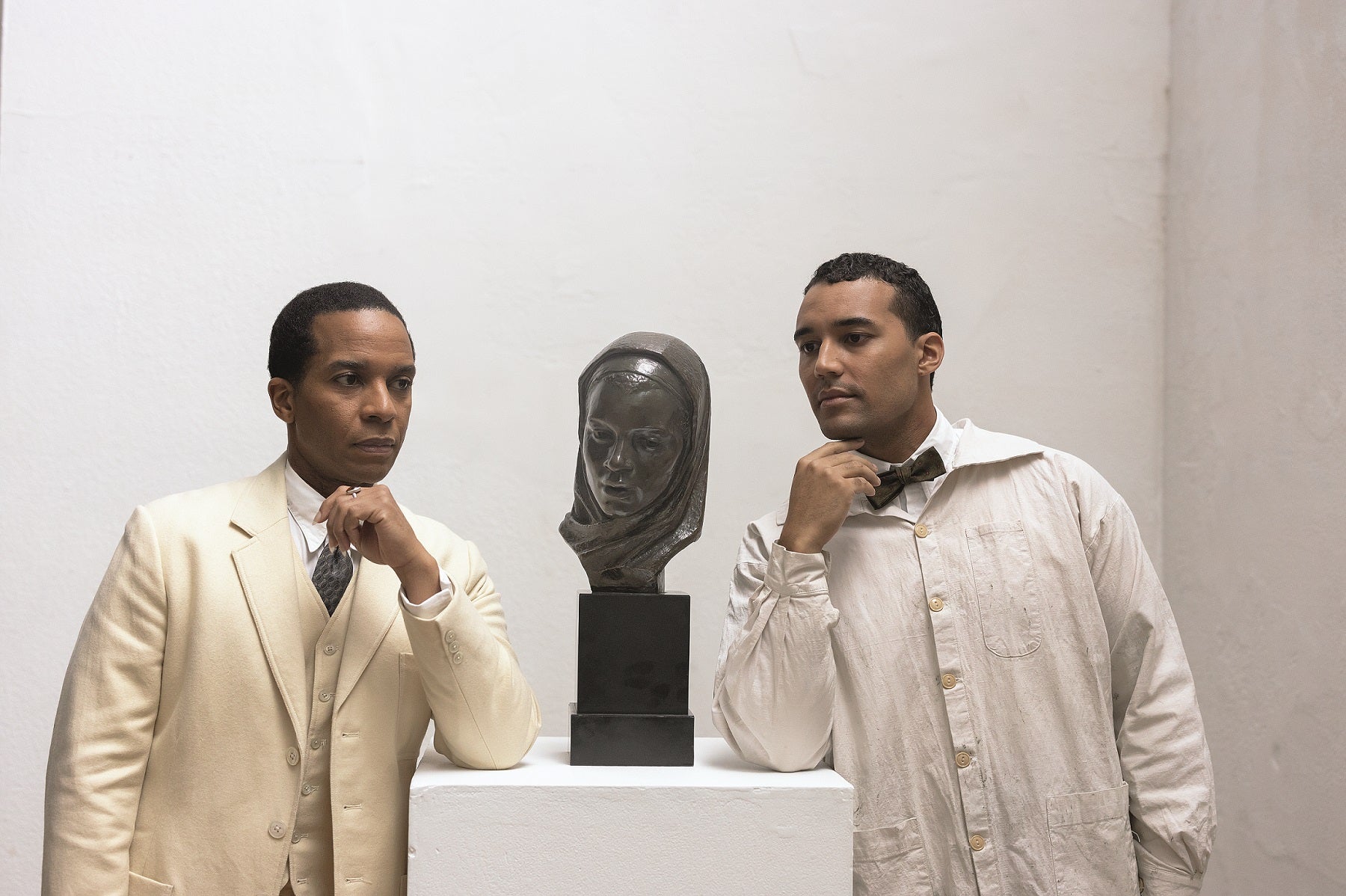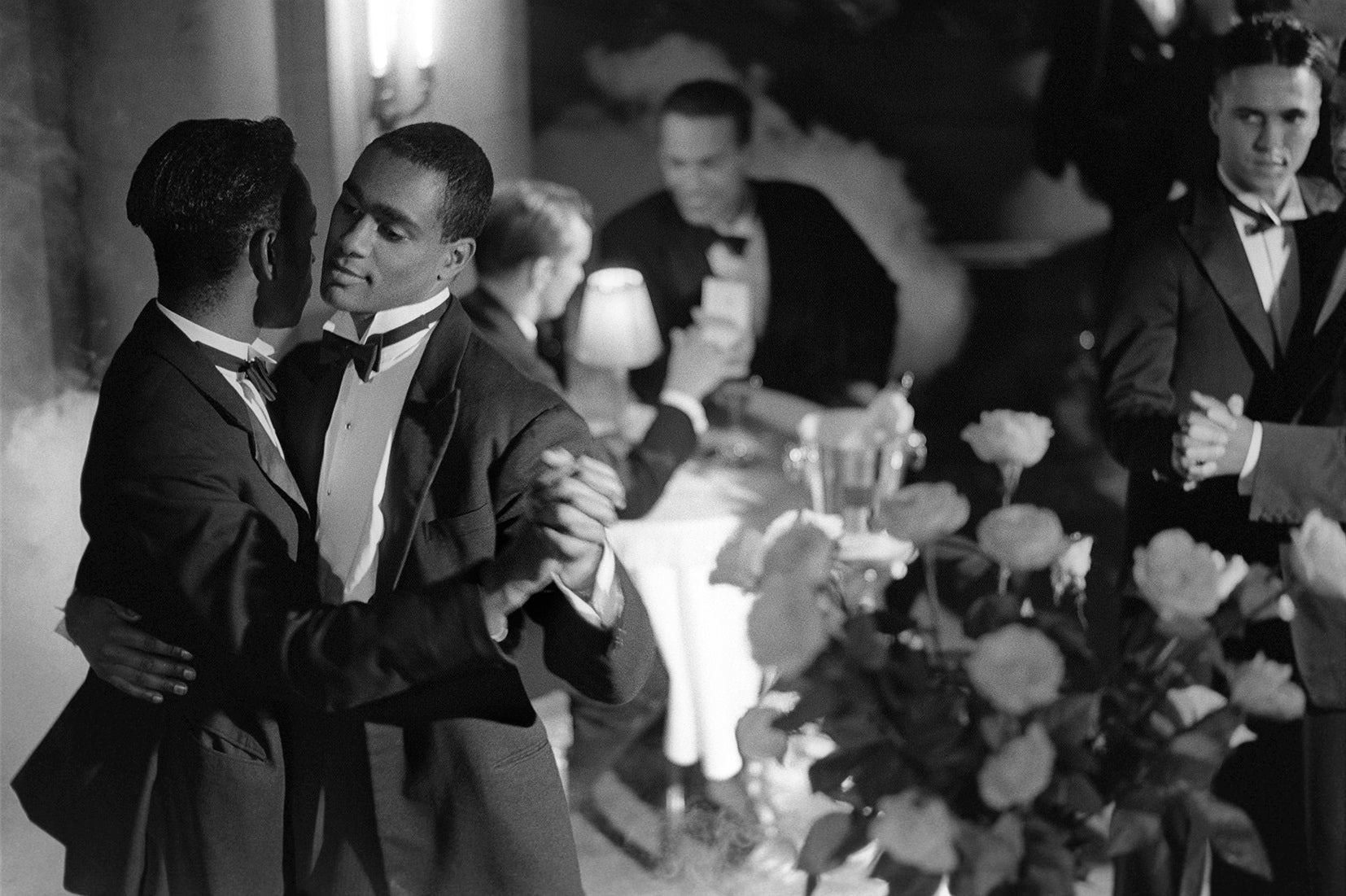Isaac Julien – What Freedom Is to Me review: Beauty in abundance, but the political works are sidelined
This Tate Britain retrospective of filmmaker Isaac Julien is an exciting event, even if it relegates some of his important early works

Isaac Julien started his career in one of the small, politicised film collectives that were a feature of the British art and film scene in the early Thatcher years. Sankofa, which he co-founded with a group of other young Black film activists in 1983 – while still a student at St Martin’s School of Art – typified the phenomenon. They addressed issues they believed to be of urgent concern to “the masses” – racism, police brutality, LGBT+ identity and rights – in terms that were uncompromisingly experimental. Budgets were minuscule, and the possibilities for exhibition limited to community centres, tiny arthouse cinemas and, if they were extremely lucky, late-night screenings on the newly created Channel 4.
A quick wind forward to now, and Julien, born in 1960, is a Knight of the Realm (created in the Queen’s platinum jubilee honours for “breaking down barriers between artistic disciplines”) with a Tate Britain retrospective on his hands. Mainstream cultural acceptance doesn’t come much more resounding than that. Yet walking through this undeniably exciting – indeed, essential – exhibition, I couldn’t help wondering if a few key things had got lost sight of along the way.
The exhibition takes the form of a set of interrelated and interconnected multiscreen installations, which are entered first through his latest work Once Again... (Statues Never Die) (2022), which sets the tone. A response to Chris Marker’s seminal 1953 documentary about African art and colonialism, Statues Also Die, it centres on a fictional conversation on the nature of “primitivism”, modern art and cultural ownership between the celebrated white American collector Albert C Barnes and the Harlem Renaissance philosopher Alain Locke. Filmed in Philadelphia’s Barnes Foundation museum in the depths of winter, it’s technically stunning. No grubby early 1980s video or Super 8mm here. The black and white screens, all showing different images, are arranged through the space in a quasi-sculptural, walk-through arrangement, reflected on the mottled stainless walls to quite dazzling effect. And, this being an Isaac Julien film, homoeroticism plays a part: Black male bodies, in both statue and real-life form, are blended into the film with consummate elegance.
The idea of the museum in general as a site for dream and desire, loss and restitution, is explored in several of the other films. Vagabondia (2000), for which he was shortlisted for the Turner Prize, turns London’s Sir John Soane’s Museum into a sort of Alice in Wonderland setting for a reflection on the links between the “heritage” embodied in historical objects and the evolution of Black Britain. It’s partly filmed in Creole, the language spoken by Julien’s St Lucian mother, while the museum’s mirrors and hidden spaces behind paintings become means of passing between different levels of history and consciousness. This idea is echoed in the interconnected spaces and ideas of the exhibition itself.
Elsewhere, Lina Bo Bardi – A Marvellous Entanglement (1919) is an experimental arts documentary on the veteran Brazilian architect, which uses dance, another of Julien’s key interests, to animate the raw concrete brutalist spaces of the many remarkable museums she has designed.
So far, so extremely clever, and very beautifully realised. Yet I was disappointed to find that much of Julien’s early, more overtly political work, made with the Sankofa collective, has been consigned to screens out in the exhibition’s foyer, where it’s difficult to engage with and – where there is sound – to properly hear. If this is a proper Julien retrospective, works such as his first film, Who Killed Colin Roach (1983), on the cover-up of a shooting in Stoke Newington police station, and Territories (1984), an experimental documentary on Notting Hill, need to be seen in their full glory rather than as what feel like peripheral afterthoughts. Young Soul Rebels (1991), Julien’s attempt at a populist but politicised Black queer punk youth movie, isn’t even mentioned.
Those early films, for all their age and technical roughness, feel more relevant to current debates on migration and cultural ownership than Ten Thousand Waves (2010), Julien’s three-screen response to the 2004 Morecambe Bay tragedy, in which 23 Chinese cockle-pickers drowned. Forensic evidence of the prevailing weather conditions is woven into a poetic dream narrative in which a beautiful goddess-like figure moves through urban landscapes in modern China. The point, if it is the point, that “illegal” migrants bring their culture and beauty with them as well as their urgent material needs, is well worth making. Yet as a response to a horrific real-life tragedy, the film feels painfully rarefied and removed from reality.
If the people in Julien’s films tend to be beautiful, beauty really is his thing. His art is affirmative rather than angry. His inspiration for taking up film may have been the 1981 Brixton riots, but his recent films certainly don’t do urban grit. They’re as carefully staged and as technically flawless as high-gloss TV advertisements. That isn’t a criticism – it’s simply an observation.
The place where all these elements come together is in his 1989 masterpiece Looking for Langston, a “meditation” on the Harlem Renaissance poet Langston Hughes. Commissioned and screened by Channel 4, the film astonished at the time, not just with its uproarious homoeroticism, which would raise more than a few eyebrows if shown on TV today, but for the sumptuous production values Julien was able to achieve on a no doubt tiny budget.

Julien deftly interweaves archive and newly shot footage in glistening black and white redolent of Hughes’s jazz-age heyday, with Brixton High Street almost supernaturally merging with 1920s Fifth Avenue at one memorable moment. There isn’t the slightest attempt to equate the film’s beautiful models and actors with the physical reality of Hughes’s life. Indeed, much of the explicitly sensual poetry on the soundtrack isn’t even by Hughes. He is simply the starting point for a much broader reflection on desire, repression and psychosexual liberation, on which reality and illusion, Black and white, past and present, are freely and brilliantly interwoven. At one point, a group of dinner-jacketed 1920s dandies groove to House music, while a gang of very 1980s skinheads and policemen try to break down the door, and Jimmy Somerville, of The Communards fame, hilariously cast as a fallen angel, looks down laughing from a balcony. Wonderful stuff.
These days, of course, Julien doesn’t have to fight to get his work screened to a tiny late-night audience on Channel 4, or hang around waiting for viewers to turn up in ill-heated arthouse cinemas. As a famous artist, he has near automatic access to substantial budgets, high-spec screening spaces, and all the cushioning benefits of celebrity. Yet in making the transition to the “safe spaces” of major art galleries, he is now almost inevitably preaching to the converted. His early desire to get his images into the dirty everyday reality of the mass of people who don’t necessarily go to art galleries seems to have disappeared from view. Yet in one of the works showing in the foyer – Lost Boundaries (2003), a compilation of his 1980s 8mm film diaries – he appears to be paying tribute to what the wall texts describe as a “lost part of an experimental film-making practice ... now known as the Independent Film Workshop Movement”. Some of the values of that era, of which Julien was a key part – such as breaking down barriers not just between art forms, but between audiences, so that art doesn’t just speak to the privileged middle-class viewer – feel well worth another look.
Tate Britain, from 26 April to 20 Aug
Join our commenting forum
Join thought-provoking conversations, follow other Independent readers and see their replies
Comments


Bookmark popover
Removed from bookmarks